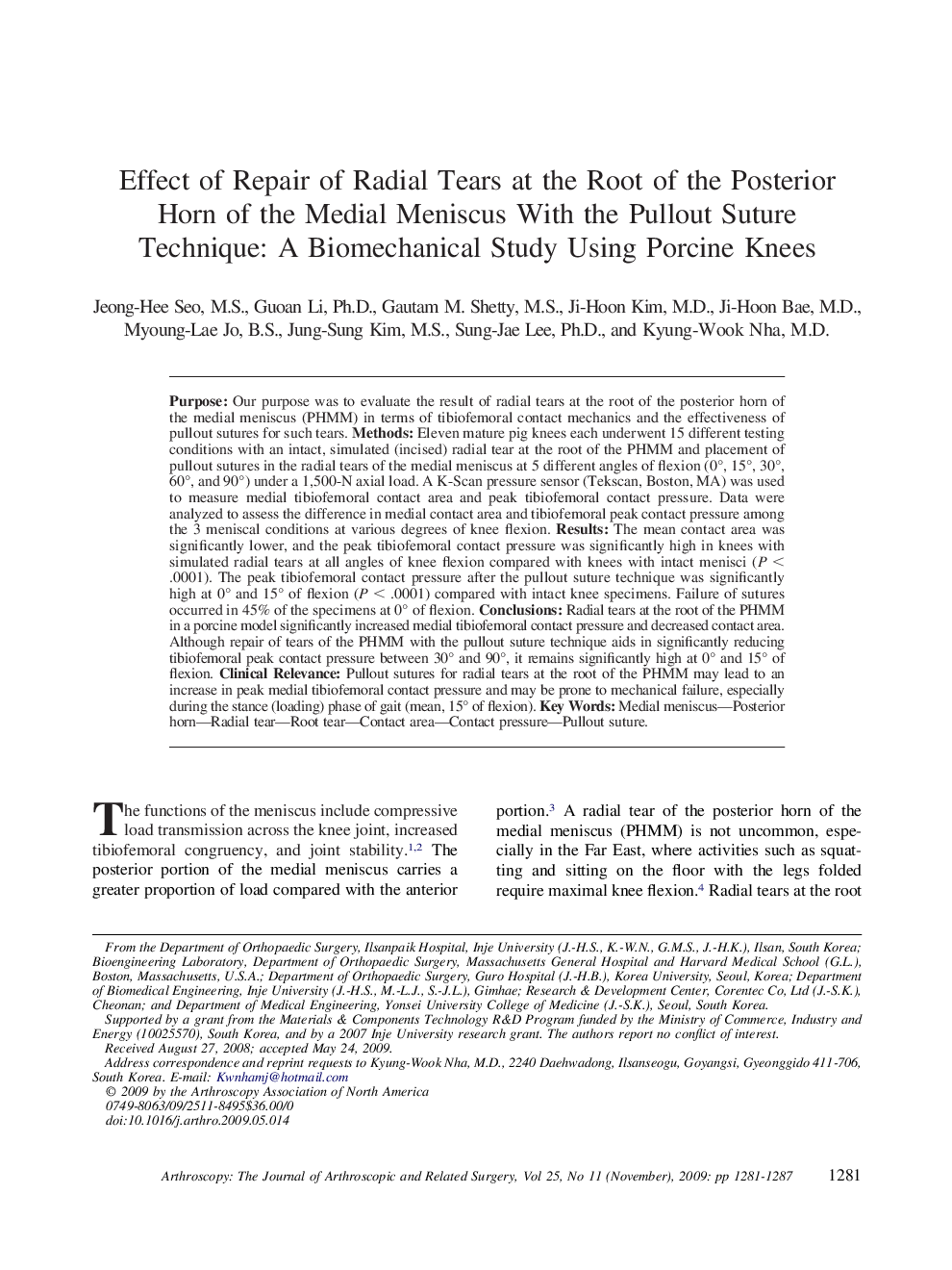| Article ID | Journal | Published Year | Pages | File Type |
|---|---|---|---|---|
| 4046586 | Arthroscopy: The Journal of Arthroscopic & Related Surgery | 2009 | 7 Pages |
PurposeOur purpose was to evaluate the result of radial tears at the root of the posterior horn of the medial meniscus (PHMM) in terms of tibiofemoral contact mechanics and the effectiveness of pullout sutures for such tears.MethodsEleven mature pig knees each underwent 15 different testing conditions with an intact, simulated (incised) radial tear at the root of the PHMM and placement of pullout sutures in the radial tears of the medial meniscus at 5 different angles of flexion (0°, 15°, 30°, 60°, and 90°) under a 1,500-N axial load. A K-Scan pressure sensor (Tekscan, Boston, MA) was used to measure medial tibiofemoral contact area and peak tibiofemoral contact pressure. Data were analyzed to assess the difference in medial contact area and tibiofemoral peak contact pressure among the 3 meniscal conditions at various degrees of knee flexion.ResultsThe mean contact area was significantly lower, and the peak tibiofemoral contact pressure was significantly high in knees with simulated radial tears at all angles of knee flexion compared with knees with intact menisci (P < .0001). The peak tibiofemoral contact pressure after the pullout suture technique was significantly high at 0° and 15° of flexion (P < .0001) compared with intact knee specimens. Failure of sutures occurred in 45% of the specimens at 0° of flexion.ConclusionsRadial tears at the root of the PHMM in a porcine model significantly increased medial tibiofemoral contact pressure and decreased contact area. Although repair of tears of the PHMM with the pullout suture technique aids in significantly reducing tibiofemoral peak contact pressure between 30° and 90°, it remains significantly high at 0° and 15° of flexion.Clinical RelevancePullout sutures for radial tears at the root of the PHMM may lead to an increase in peak medial tibiofemoral contact pressure and may be prone to mechanical failure, especially during the stance (loading) phase of gait (mean, 15° of flexion).
